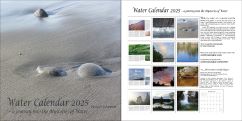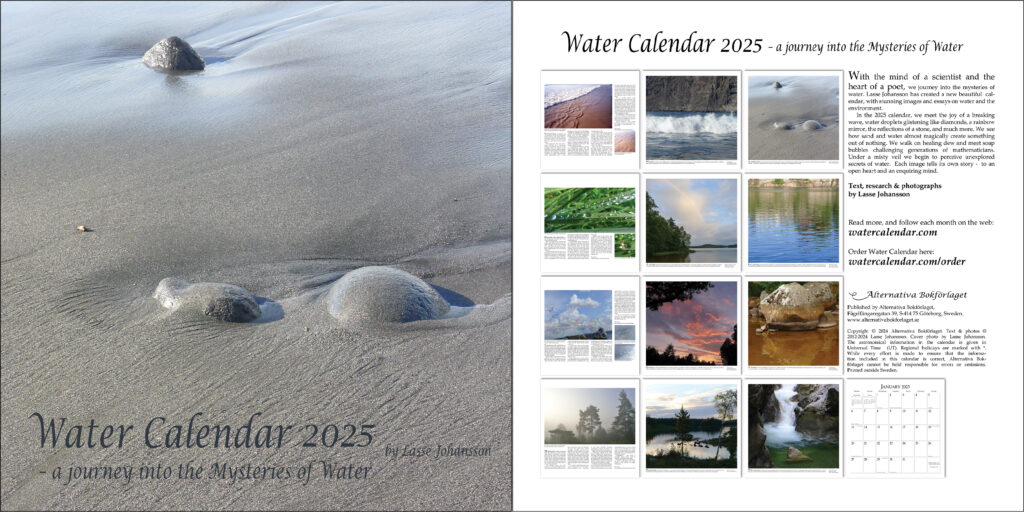Lasse Johansson has created a new beautiful wall calendar for 2025, with stunning images and essays on water and the environment.
Browse and order the calendar here ($19.95):
https://www.magcloud.com/browse/issue/2955894
From the cover:
“With the mind of a scientist and the heart of a poet, we journey into the mysteries of water. In the 2025 calendar, we meet the joy of a breaking wave, water droplets glistening like diamonds, a rainbow mirror, the reflections of a stone, and much more. We see how sand and water almost magically create something out of nothing. We walk on healing dew and meet soap bubbles challenging generations of mathematicians. Under a misty veil we begin to perceive unexplored secrets of water. Each image tells its own story – to an open heart and an enquiring mind.”


